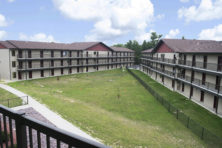Sustainability 2019: What Is ‘Affordable’ Housing in Door County?
- Share
- Tweet
- Pin
- Share
Decades ago, the U.S. Department of Housing and Urban Development defined housing as “affordable” if it didn’t cost the household more than 30 percent of its gross income.
On a community level, “affordable” housing is defined as that which households of median income or below can rent or purchase for no more than 28 to 30 percent of gross household income. Many people further refine or clarify that definition, specifying that the housing expenditures should include all associated costs – utilities, and for homeowners, mortgage principal and interest, taxes, fees and insurance – and that the gross-income figure should be exclusive of other debt such as student loans, car payments, child support and credit cards. Remember, too, that those purchasing a home typically need to put a down payment on the mortgage. Mortgage affordability is generally considered to be two and a half to three times one’s annual income.
“Household income,” which is defined by the U.S. Census Bureau, encompasses the income of the householder and all other individuals who are 15 years old and older in the household, whether they are related to the householder or not.
“Median household income,” also defined by the U.S. Census, is the income of the household(s) located exactly in the middle of an ordered list of all household incomes.
In Door County that number is just shy of $54,000. Households earning 60 to 120 percent of that are typically the target for workforce housing initiatives, which in Door County puts the range from $32,400 to $64,800.
Households on the low end of that range are assumed to be able to afford housing costs of $810 per month, and $1,620 on the high end. But that comes with a gigantic catch: it assumes the household has no debt.
If a household has a modest car payment of $150 per month or a student-loan payment of the same size, “affordable” very quickly drops below $650 per month. If a household has both of those expenses or is lucky enough to find day care on the peninsula, it falls below the $500 range before factoring in rising health-insurance and medical costs.
That $54,000 household income split between two wage earners comes out to about $13 per hour. That’s $5.75 more than the Wisconsin minimum wage.
Of the 200 housing units civic leaders boasted of building in Sturgeon Bay and Sister Bay in recent years, nearly all of them rent for more than $800 per month, and most cost significantly more.


